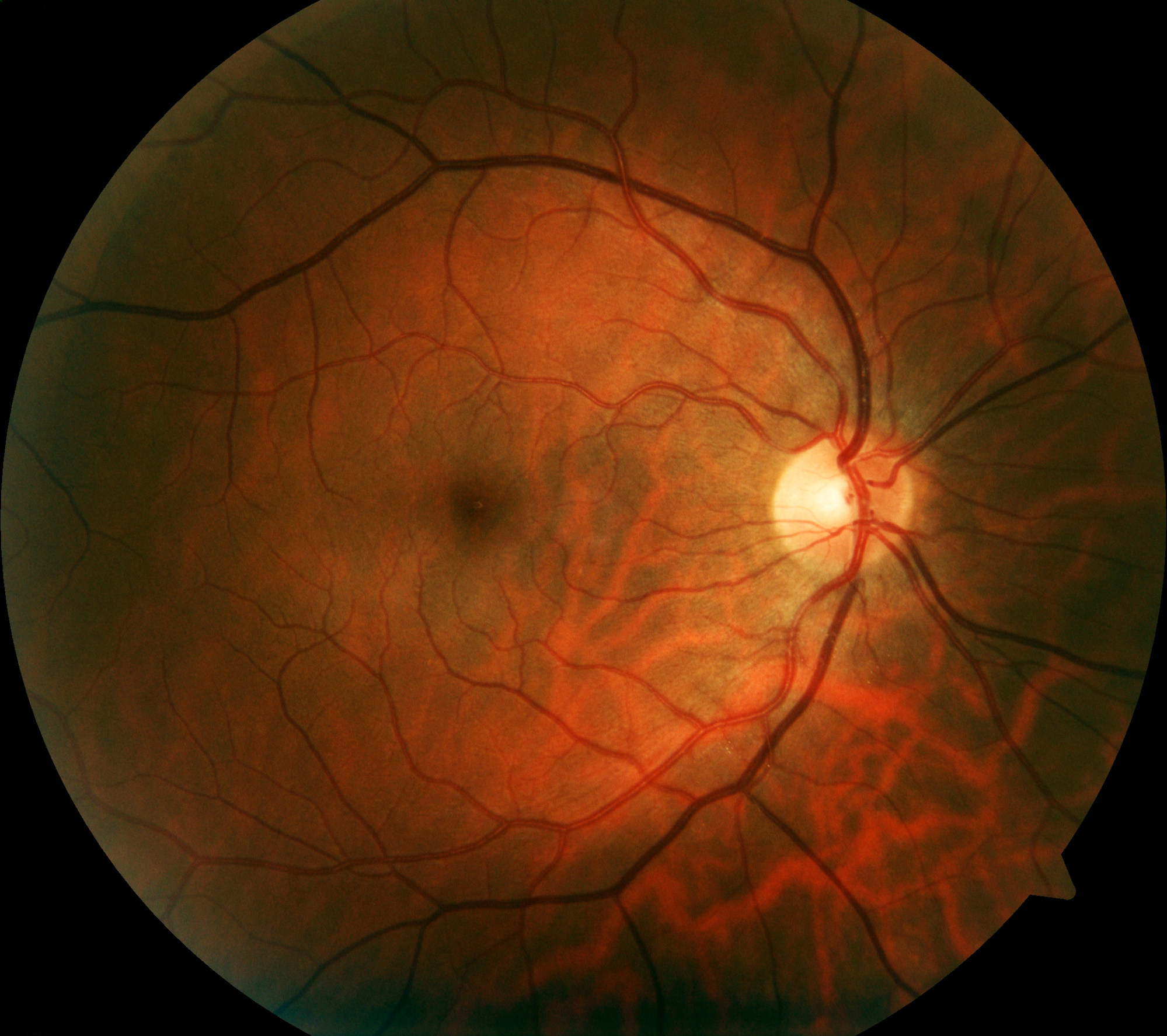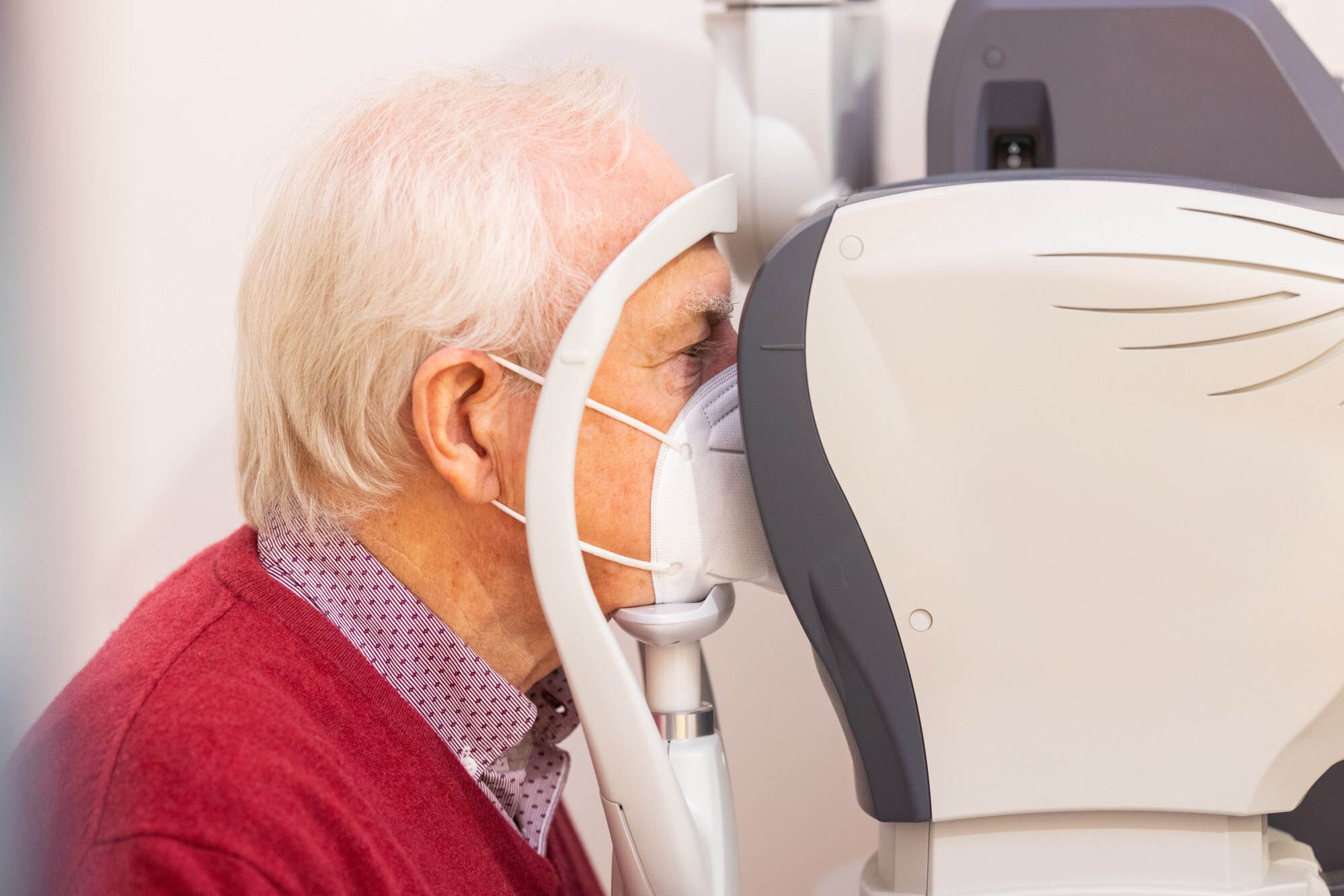
Will you develop Alzheimer’s disease? Early signs could be detected in your eyes before symptoms arise
- Scans of the eyes’ retinas can identify key changes in blood vessels which may provide an early sign of Alzheimer’s disease, new research shows
- Small vessels in the retinas may also be linked to other brain diseases, including other types of Alzheimer’s disease, Parkinson’s and certain dementias
Scans of the eyes’ retinas can identify key changes in blood vessels which may provide an early sign of Alzheimer’s disease, according to new research from the University of California, San Francisco (UCSF).
The retinas also offer important insights into how one of the most common genes for Alzheimer’s risk contributes to the disease, the researchers say.
That the eyes can offer a lens on our health is not news. The brain is tightly packed inside the skull, so anything extra in there – additional blood, fluid or growing tumours – increases the pressure in a relatively small space. This can lead to the eyes giving signs of a problem in the skull or even elsewhere in the body.

“Because blood vessels in the eye have the same embryo origin, histology and structure as those in the brain, they serve as an incredibly convenient way to assess changes in the retinal blood vessels which could indicate changes in the blood vessels in the brain,” says Andy Meau, a Hong Kong-registered optometrist and director of Central Eye Care.
Because retinal blood vessels are the only visible blood vessels in our body, the retina is the only place in our body where blood vessels can be observed directly in a non-invasive manner, he adds.
‘When did we first meet?’: Daughter on her mother’s dementia
The USCF team examined tiny blood vessels at the back of the eyes of elderly people with and without APOE4 gene mutations, the most prevalent genetic risk for Alzheimer’s disease. The smallest blood vessels in those with the mutation seemed to have lower density.
“Higher capillary density probably means better blood flow into and out of the brain,” says lead author Fanny Elahi, assistant professor of neurology at the Memory and Ageing Centre at UCSF. “While lower density means the brain’s supply of food and oxygen isn’t as efficient, it also means that the removal of toxins and waste probably isn’t managed as well either: amyloid – or protein – build-up in the brain is often cited as a cause for cognitive decline.

Meau says that during a regular eye exam, eye drops are used to dilate the pupils to allow examination of the “fundus”, the back of the eye including the retina, retinal blood vessels and optic nerve. The doctor can see whether there are any sight-threatening eye diseases, such as retinal detachment or macular degeneration, while a look at the blood supply in the retina can indicate whether there is vascular disease in the body. A photo of the back of the inside of the eye is taken after every dilated eye examination to allow for future comparisons.
“Even minute differences can be detected if the pictures are studied carefully,” says Meau, so they can act as a health barometer, monitoring changes.
These routine eye tests can be augmented with more complicated techniques, such as automated retinal imaging analysis, or ARIA. These use artificial intelligence and machine learning to scan retinal photos and assess risks of developing certain diseases before physical signs and symptoms appear.
New Alzheimer’s analysis may detect disease up to 10 years before symptoms
More research is needed to determine whether the reduced capillary density in APOE4 carriers is part of the cause of Alzheimer’s in those patients (as blood flow to the brain is compromised) or whether it is a symptom. Elahi says there is an association of age with decreased capillary density, and that capillary density is associated with blood flow to the brain and how well it is working.
Elahi adds that the research may suggest that APOE4 carriers are not born with abnormal small blood vessels, but that the team has captured an age-associated phenomenon. Since the APOE4 carriers that her team studied had normal cognition, they suspect that the changes in small blood vessels may be the beginning in a cascade of problems that leads to cognitive impairment, or dementia.

Low-density small blood vessels may, therefore, be an early warning sign. The study was designed to target carriers without symptoms to study the early, preclinical stage in those at risk for Alzheimer’s disease – “this is the stage we ought to understand and target with novel therapies,” Elahi says – to make a difference before it’s too late.
Having these small vessels may also be linked to other brain diseases, Elahi adds, including other types of Alzheimer’s disease, Parkinson’s and certain dementias.

